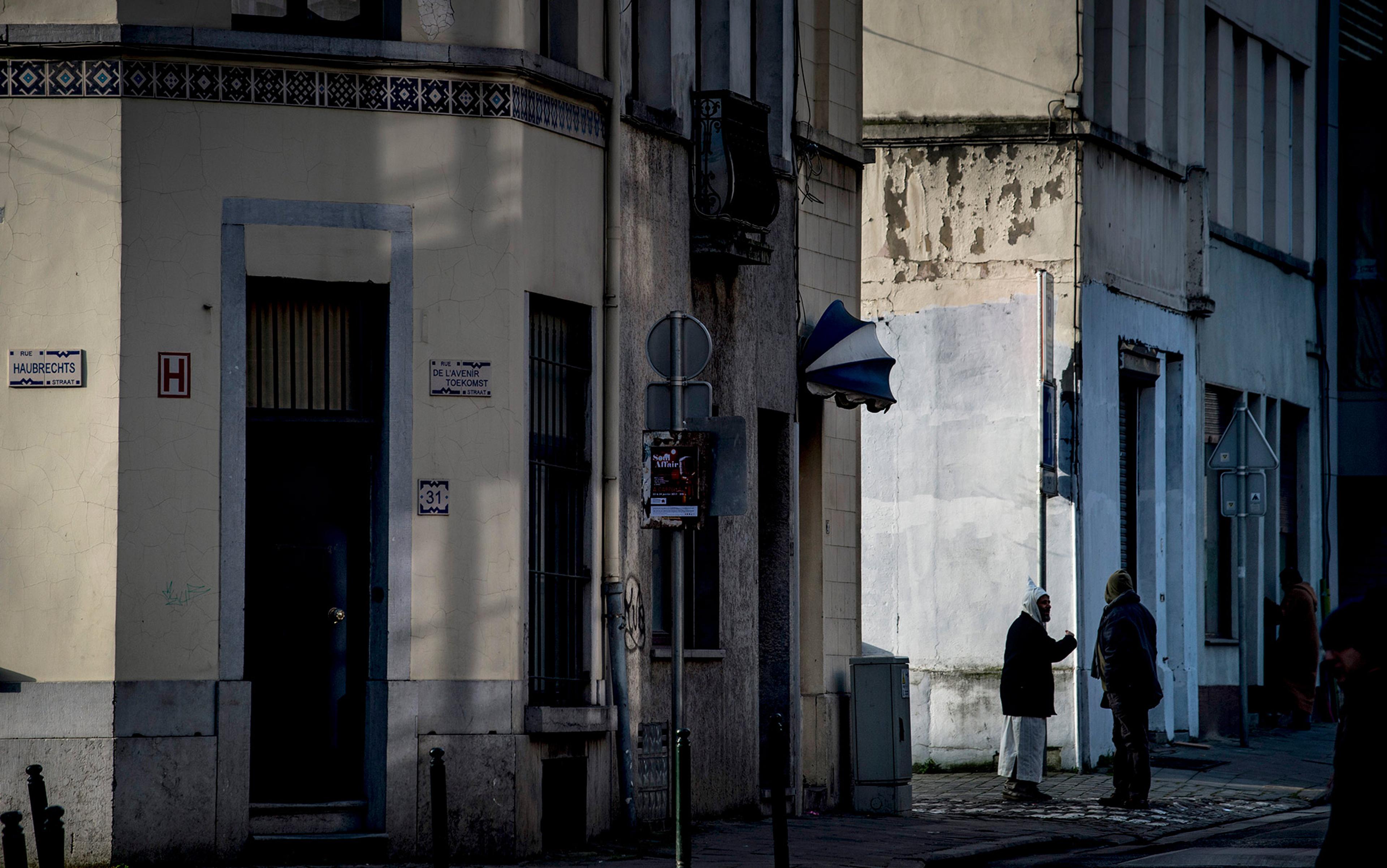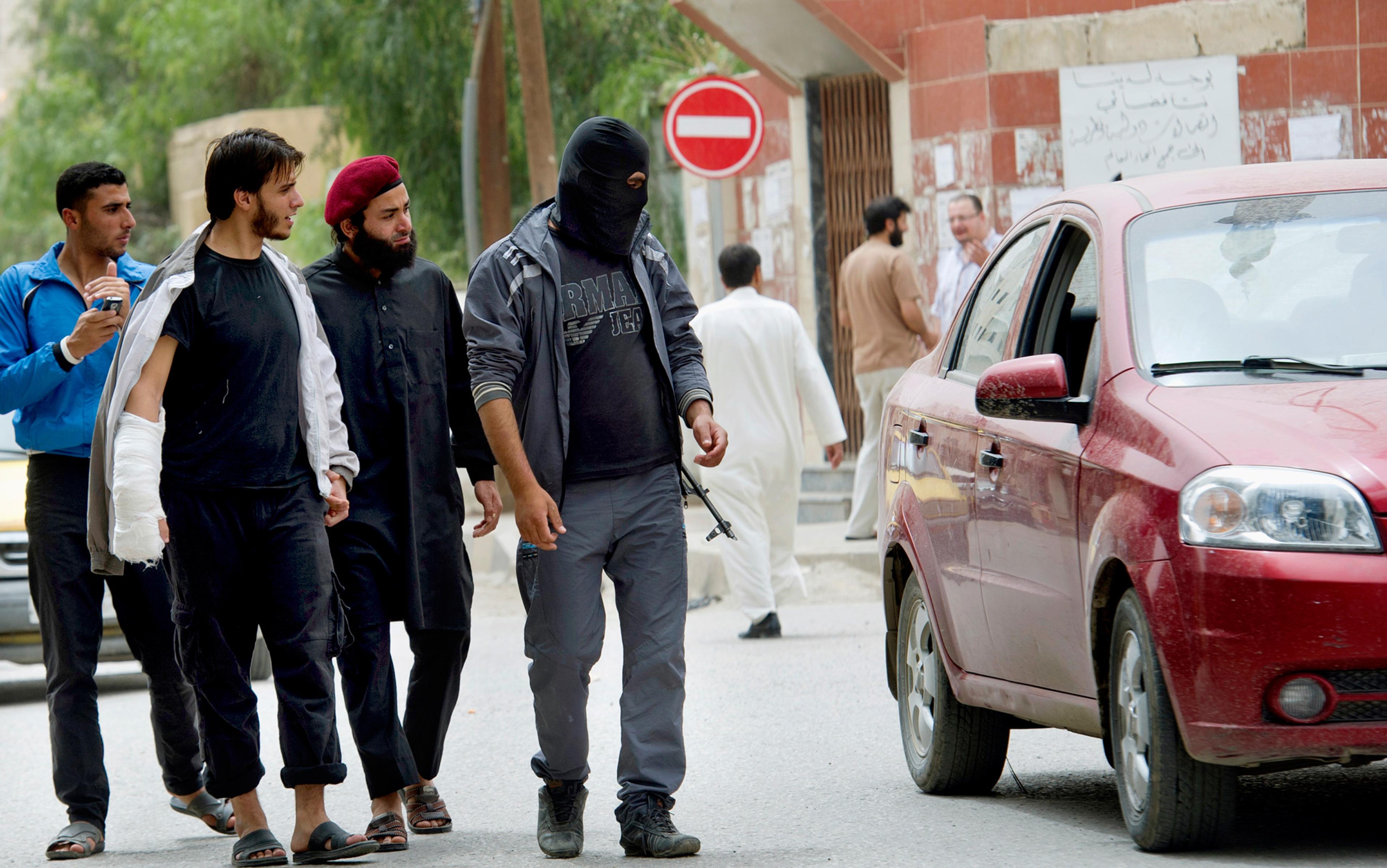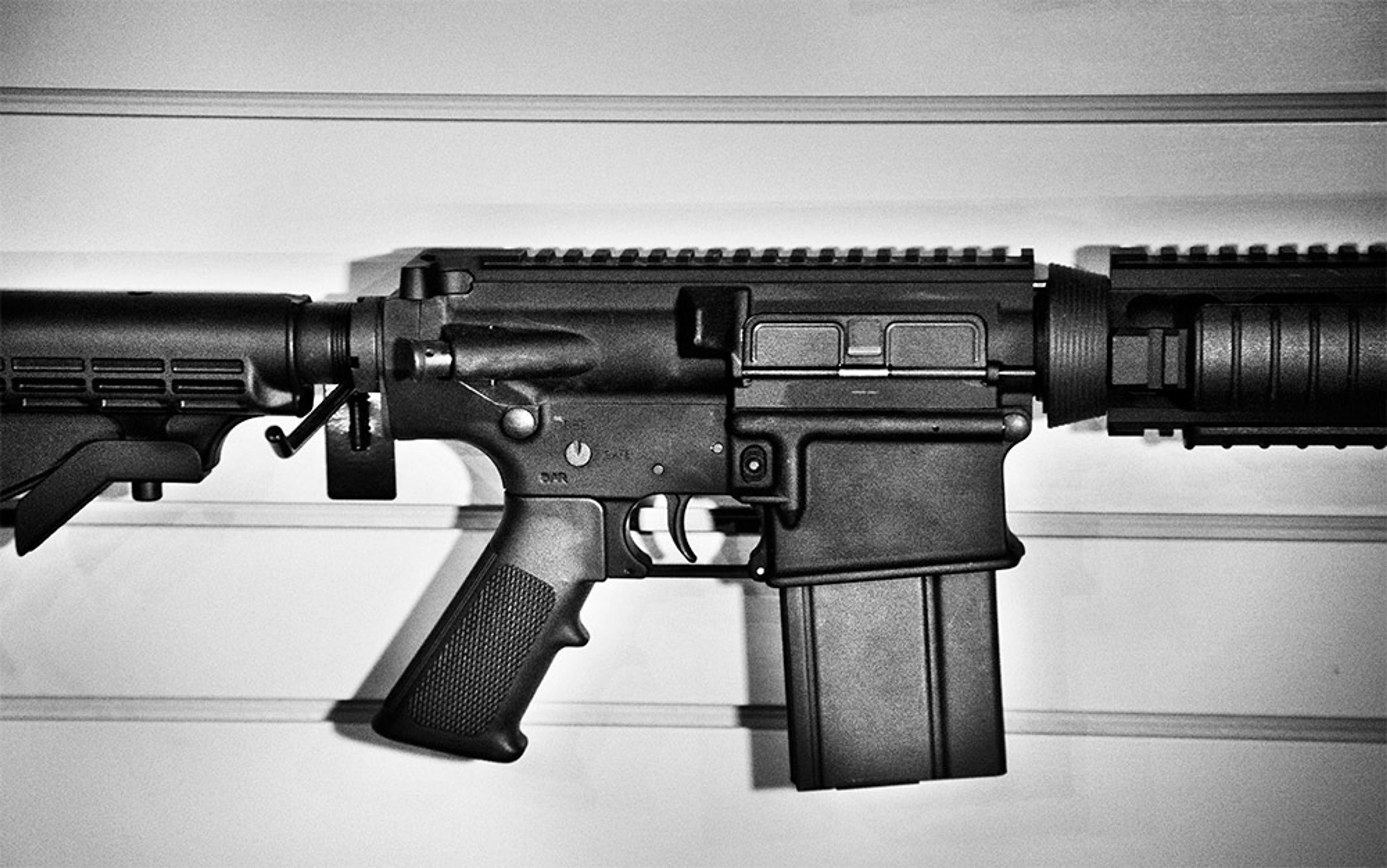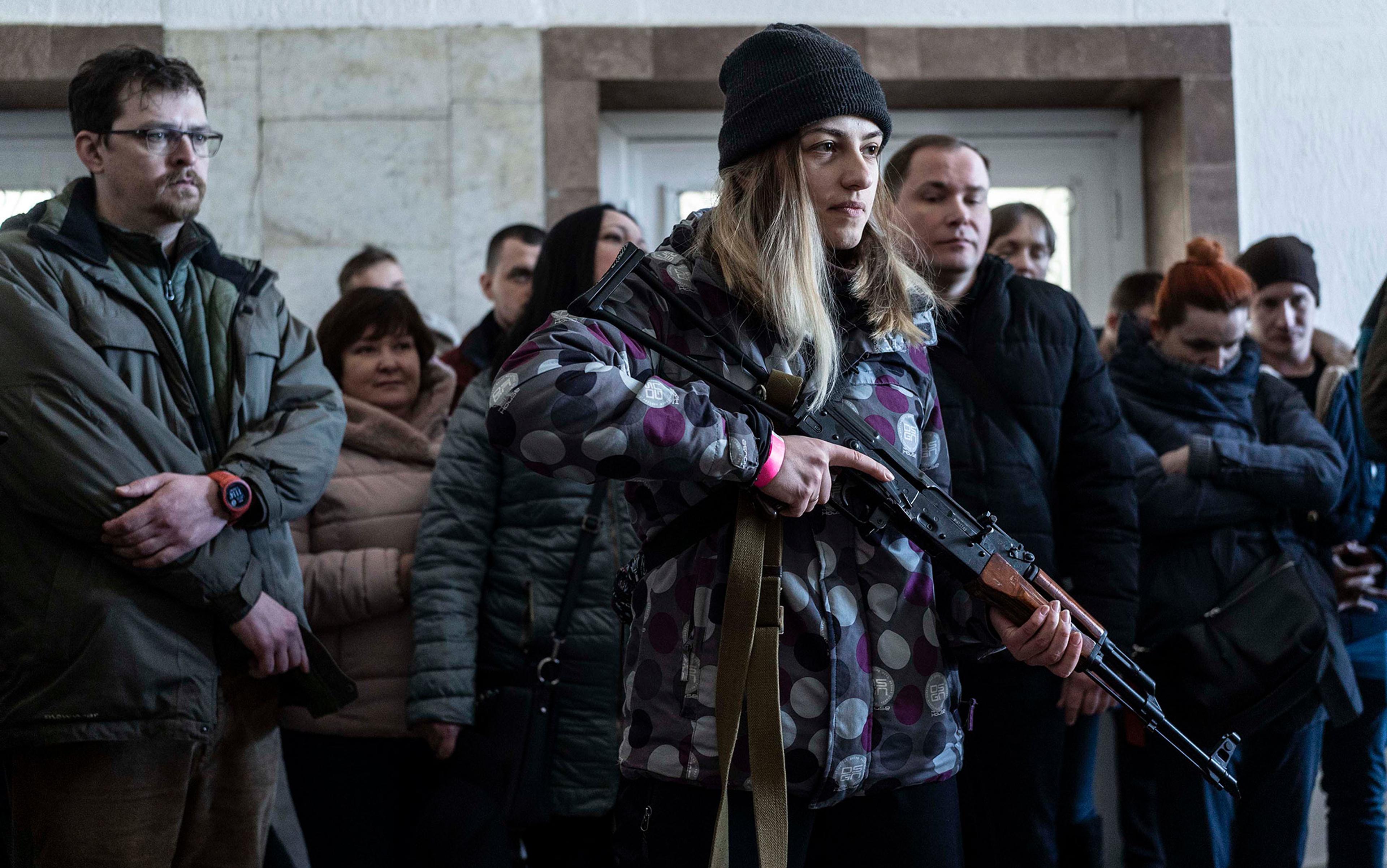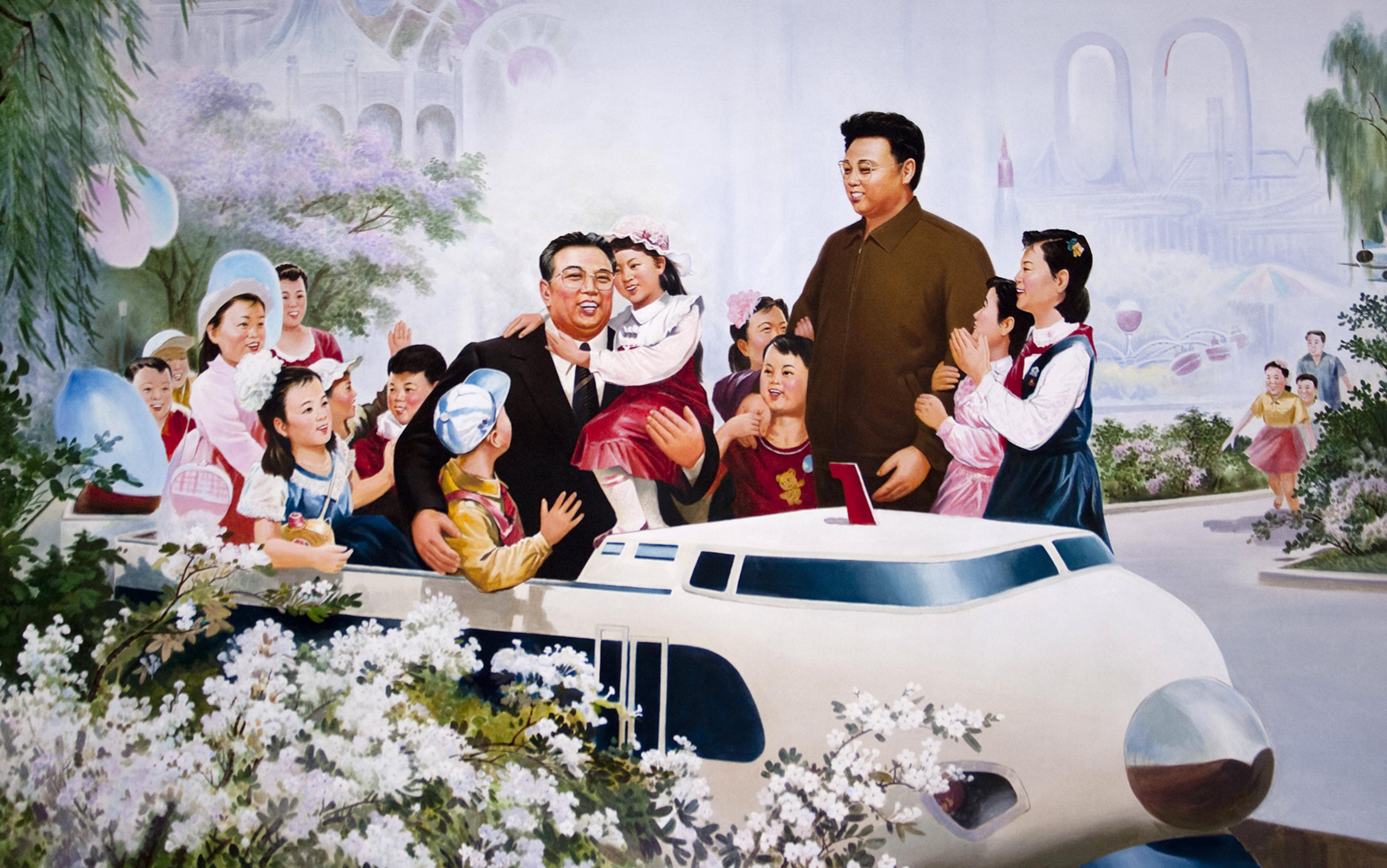The last of the shell-shocked were being evacuated as I headed from home toward Las Ramblas, Barcelona’s famed tourist-filled walkway in August 2017. Another disgruntled ‘soldier of ISIS’ had just ploughed his van into the crowd there, killing 14 and wounding more than 100 people from nearly three dozen nations. I had just dropped off my wife’s niece to meet friends by the Plaça Catalunya, near where the rampage began. It was déjà vu and dread again, evoking the Paris massacre at the Bataclan theatre and the café La Belle Équipe in 2015, next door to where my daughter lived. At a seafront promenade south of the city, a car of five knife-wielding ISIS kamikazes mowed down a woman before police killed them all. One teenage attacker had posted on the web two years before that on his ‘first day as King of the World’ he would ‘kill infidels and leave only Muslims [who] followed religion’.
As I approached the police security line in Barcelona, someone thought they heard a noise, a rumour of another attack; someone else saw a sudden movement by a darker-skinned man, an unanticipated fall by an onlooker – or perhaps nothing at all. People surged, screamed, cried, and then it all stopped as suddenly as it had started. The strategy in hitting any of the unlimited soft targets in our societies is to undermine people’s faith that government can provide security, while increasing suspicion and hatred against those who are different so they will see that trying to live in peace only brings pain.
The next day, along the wide shopping boulevard that ends in the Plaça Catalunya, there was a minute of silence, then tears and applause. For a few hours, Spain’s people had come together to show, as the Spanish prime minister Mariano Rajoy bellowed, ‘our values and way of life will triumph’, but without a hint of how – just as the British prime minister Theresa May had proclaimed ‘our values will prevail’ last March when yet another petty criminal, ‘born again’ into the salvational grace of radical Islam, killed and wounded pedestrians after driving across Westminster Bridge.
Over the course of these events, pundits and politicians repeated platitudes, then tore into one another for not having a clue about how to stop what everyone knew was coming next. One of the problems may be looking at radical Islam instead of larger, more global forces worldwide. These attacks are unleashed from the dark side of globalisation, where desire for liberal democracy is lost.
The week before the Barcelona attack, the terrorist in Charlottesville, Virginia, was a white supremacist who maimed and killed people nearly at random with his vehicle in a fashion painfully familiar to the ISIS-inspired killings in London, Nice, Berlin and Stockholm. It was an act recently repeated in Manhattan by a man pledged to ISIS, who killed eight pedestrians and wounded 12 with a rental truck. An acquaintance and activist from the attacker’s immigrant community described him in The New York Times as someone initially unremarkable who had developed ‘monsters inside’. So, too, according to the Charlottesville attacker’s former history teacher: ‘This was something that was growing in him … He had this fascination with Nazism [and] white supremacist views.’
Whether alt-Right or radical Islam, the values of liberal and open democracy increasingly appear to be losing ground around the world to those of narrow, xenophobic ethno-nationalisms and radical ideologies. Our research team at Artis International and the Centre for the Resolution of Intractable Conflict at Oxford University has found that these forces are clobbering free societies today much like fascists and communists did back in the 1920s and ’30s. In Hungary, we find that youth strongly support the government’s call for restoring ‘national cohesion’, lost with the fall of Miklós Horthy’s fascist and pro-Nazi regime; the call to root out ‘cosmopolitan’ and ‘globalist’ values is strong. In Iraq, we find that nearly all of the young people we have interviewed who are coming out from under Islamic State rule in Mosul initially welcomed it for stability and security amid the chaos following the US invasion – until they were alienated by the ever-increasing brutality.
According to the World Values Survey, the majority of Europeans do not believe that living in a democratic country is ‘absolutely important’ for them. This includes most young Germans under age 30, and especially their elders in former communist East Germany who, in September, voted into Parliament the Right-wing populist party Alternative for Germany. Last April, Marine Le Pen’s hard-Right National Front and Jean-Luc Mélenchon’s hard-Left Unbowed France together captured nearly half of the French vote of people age 18-34 in first-round national elections. And in the US, political scientists Roberto Foa and Yascha Mounk find that nearly half of American citizens lack faith in democracy; more than one-third of young high-income earners actually favour army rule, presumably to halt rising social unrest linked to income inequality, job insecurity, and persistent failures in racial integration and cultural assimilation in an age of identity politics.
The new world disorder puts us all at risk in this global age, where non-state forces volcanically erupt through the nation-state system, spreading noxious, violent memes
In our own research in France and Spain, we find little willingness to make costly sacrifice for democracy, especially compared to the willingness to fight and die for jihad in Europe, North Africa and the Middle East. Our wide-ranging interviews and psychological experiments have uncovered not a ‘clash of civilisations’, as Poland’s interior minister declared in reaction to events in Barcelona, but civilisation’s unraveling, as young people unmoored from traditions flail about in search of a social identity that gives personal significance and glory. Individuals radicalise to find firm identity in a flattened world. In this new reality, vertical lines of communication between generations are replaced by horizontal peer-to-peer attachments that can span the globe, albeit in vanishingly narrow channels of ideas and information. Our research has shown that, despite its vitriol against ‘globalists’, today’s alt-Right movement involves the same narrow-minded global weave of tweets, blogs and chatrooms linking physical groups across the world as the jihadi movement.
The new world disorder puts us all at greater risk in this global age, where non-state forces volcanically erupt through the nation-state system, spreading noxious, violent memes. The Western creations of the nation-state and the relatively open markets that today dominate the global political and economic order (and to which non-Western powers like China and Russia also subscribe) have largely supplanted age-old forms of governance, social formations and economic activity that involved whole communities of people that once intimately knew one another. Instead, rising populations and urbanisation, extensive and rapid communications and transportation, and science and technology have transformed people in the farthest reaches of the planet into competitive players seeking progress and personal fulfilment through material accumulation and its symbols. But market-driven competition often comes at steep personal and social cost. When communities lack enough time to adapt to all the innovation and change, its members may fall short of their aspirations; anxiety and alienation bubble up, and violence can erupt along prevailing political and religious fault lines.
It was religious philosopher Søren Kierkegaard who first discussed ‘the dizziness of freedom’ and the social disruption that it creates. Seizing on the idea in Escape from Freedom (1941), humanist philosopher Erich Fromm argued that too much freedom caused many to seek elimination of uncertainty in authoritarian systems. This has combined with what social psychologist Arie Kruglanski calls ‘the search for significance’, propelling both violent jihadists and militant supporters of populist ethno-nationalist movements worldwide. In the wake of these forces, we see what psychologist Michele Gelfand describes as a ‘tightening’ of political cultures, featuring intolerance of behaviours that differ from the norm. Thus, in our recent fieldwork with youth emerging from under ISIS rule in Mosul, we find that although ISIS may have lost its state, the Caliphate, it hasn’t necessarily lost allegiance among the people to its core values of strict religious rule and rejection of democracy. As one young man put it: ‘Sharia is God telling you what to do … Democracy is humans causing wars and distrust. To be free to do whatever you want leads to many problems and divisions and corruption in society.’
World history from the 19th century onwards illustrates the impact of globalising trends. After the massive bloodletting of the French Revolution and Napoleonic wars from 1789 to 1815, governing elites tried to find consensus on how Europe, and the expanding colonial world it dominated, would be run. For a hundred years, from the Congress of Vienna in 1815 to the outbreak of the First World War in 1914, this informal international collaboration basically maintained the integrity of existing empires and nation-states. The order endured despite popular uprisings like the French Revolution of 1830 and the continent-wide 1848 Revolution, both erupting over lack of rights and social protection for peasants and workers in industrialising societies. And it held fast in the face of conflicts like the Crimean War (1853-1856), a Russian quest to extend its reach. Britain, especially, repeatedly intervened to maintain Europe’s balance of power at home and abroad. But the gap separating elite values and popular needs – along with the willingness of one, then the other, of Europe’s powers to break the consensus – ultimately unwound the world order.
By the end of the 19th century, this order had attained heightened levels of globalisation, liberating human beings from near-exclusive reliance on wind, water and muscle power. Advancements in transportation included worldwide construction of roads and railroads, steam ships across the waterways, and later automobiles. Communication technology included the telegraph, and later telephone, film and radio. Scientific prowess multiplied, and capital flowed. People moved freely around the world; Russia and Turkey alone required passports.
But just as today, the rapid, radical changes produced counter-cultural pressures, with social revolutionaries and anarchists propelling a wave of transnational terror that began shortly before the assassination of Russia’s Tsar Alexander II in 1881. This terrorist wave extended through to the assassinations of the prime ministers of France in 1894 and Spain in 1897; the empress of Austria in 1898 and the king of Italy in 1900; and finally, the killing of United States president William McKinley in 1901. It involved bombings of ‘bourgeois’ civilians in cafes and theatres across Europe and North America before abating with the onset of the First World War.
‘When compared with the suppression of anarchy, every other question sinks into insignificance’
The ineffective response of those in power, likewise, resembled what we see today. Affected states initially lashed out in stunned bafflement, often missing their illusive targets but hitting upon those unrelated to terrorist acts. This included, for example, violent repression of the trade union and labour movements that arose in late 19th-century Europe and the US. Nations reacted by adding or reinforcing state security organisations: Russia’s Okhrana, created in 1881, was a precursor of the NKVD and KGB; Britain founded New Scotland Yard in 1890; France’s Direction Centrale de Renseignements Généraux came in 1907, followed by the US Bureau of Investigation in 1908, a precursor of the FBI.
In his first Annual Message to Congress (3 December 1901) after McKinley’s death, US president Theodore Roosevelt declared that: ‘When compared with the suppression of anarchy, every other question sinks into insignificance.’ He offered a corollary to the Monroe Doctrine: anarchy’s ‘general loosening of the ties of civilised society, may in America as elsewhere, ultimately require intervention by some civilised nation, and may lead the United States, however reluctantly … to the exercise of an international police power.’ The war against anarchy and terror even helped to justify the brutal repression of a native insurgency against the US ‘civilising mission’ and rule in Muslim areas of the Philippines.
Ultimately, the anarchist’s diffuse movement lost steam, but globalism and the reactions to it propelled other forces to the fore. In the Soviet Union, peasants and workers embraced communism and acceded to the suppression of all dissent that came with Stalinism. The Nazis preached the revival of the nation and a race war against the forces of cosmopolitanism and cultural diversity, and tens of millions of people in Germany’s advanced industrial society grovelled at Hitler’s feet.
And in the US, from the late 19th century on, we saw the rise of the Ku Klux Klan. The Klan had three iterations in the US, starting with its founding in 1866 by Southern whites to fight reconstruction, including policies to give African-Americans equal rights. It was temporarily crushed, but rose again in 1915 in the wake of burgeoning immigration to stand against not just black Americans, but also Roman Catholics, Jews, and foreigners of any ilk. By the 1920s, at its height, the KKK’s membership of some four million came from all layers of majority-culture in the US heartland. By 1927, members of the KKK had found fellow travellers – those embracing Charles Lindbergh and his America First Committee, with its fascist and anti-Semitic rhetoric endorsing an isolationist US that would not oppose Hitler or the Nazis in the lead up to the Second World War.
Today, the parallels between the alt-Right and radical jihadism are clear, illustrated by the late William Luther Pierce III. I met the tall, soft-spoken physicist in 1980, when I sought to learn how he had hosted the French Holocaust-denier Robert Faurisson. By then one of the most persuasive voices of the white-supremacist movement, he told me that ‘evil is the failure to recognise the necessity of race war’ and indeed, he had strategised mass revolt and white nationalist revolution through his group, the National Alliance.
These were the ideas that inspired Timothy McVeigh, who was executed for bombing a federal office building in Oklahoma City in April 1995, killing 168 and injuring over 600. The dream of a race war also inspired Dylann Roof to murder nine people at the Emanuel African Methodist Church in Charleston in June 2015. With his act, he believed, the war would come a few years hence, and he’d be revered. These kinds of acts aim to incite retaliatory measures of repression and violence against whites, including a tightening of gun laws, much as ISIS aims to accomplish repression of Muslims through acts of terror in the West.
White-supremacist and jihadi groups parallel one another not only in strategy and tactics, but also in messaging. Klansman and Aryan Nations member Louis Beam published his 1983 manifesto, ‘Leaderless Resistance’, in The Seditionist in 1992 , as a social resistance strategy for white nationalists. Like the jihadi movement, it rejects commanding anti-government acts from the leaders of a top-down hierarchy in favour of letting independent groups and individuals act on their own. And it rejects direct messaging in favour of inferred messaging – all to prevent authorities from decapitating the movement or assigning legal responsibility for cause and effect.
Whether jihadist or alt-Right, these leaders are often educated and well-off
When Mustafa Setmariam (aka Abu Musab al-Suri) published Al-Qaeda’s strategy for jihad as ‘The Call for Global Islamic Resistance’ in 2004, one could just as well have been reading an exegesis on The Seditionist and Louis Beam. Like Beam, Setmariam adopted the theme of leaderless resistance: ‘[S]pontaneous operations performed by individuals and cells here and there over the whole world, without connection between them, have put local and international intelligence apparatuses in a state of confusion.’
There are leaders, of course – founders of groups, or those who analyse conditions and formulate plans. Whether jihadist or alt-Right, these figures are often educated and well-off. Osama bin Laden was famously a multimillionaire who studied economics and civil engineering. His successor as head of Al-Qaeda, Ayman al-Zawahiri, is a surgeon from a distinguished and prosperous family of doctors and scholars. ISIS leader Abu Bakr al-Baghdadi received a PhD from the University of Baghdad. Charles Lindbergh was not just an aviator but the son of a lawyer and a US Congressman. William Pierce was a physicist descended from Southern aristocracy. Richard Spencer, the president of the alt-Right’s pre-eminent think tank, the National Policy Institute, is the son of an ophthalmologist and an heir to a cotton-field fortune, who received his MA in humanities from the University of Chicago. Across the wide swath of revolutionary and insurgent groups, founders are usually members of the middle or upper class, who then reach out to the more marginalised, less educated and poorer masses to increase potency.
Leaders may be high-born, but whether jihadist or alt-Right, mass recruitment is not primarily top-down but peer-to-peer. The Soufan Group, which provides strategic security intelligence services to governments and multinational organisations, explains that individuals are ‘motivated to travel to Iraq and Syria by friends, family, or influential members of their communities’. Data assembled by the International Centre for the Study of Radicalisation at King’s College London indicates that approximately 75 per cent of those who join the Islamic State at home or abroad do so in pre-existing groups. According to West Point’s Combating Terrorism Center, only one in five ISIS foreign fighters were recruited directly through social media, although social media greatly facilitates the jihadi movement’s global communication and integration.
But even more than today’s jihadists (where personal networks rooted in immigrant neighbourhoods and clustered in particular towns and foreign territories remain key to recruitment), the alt-Right grassroots movement has coalesced online, on the dark side of social media. Before the predominance of the internet there were fringe newsletters, radio programmes and rallies, like the attempted Nazi march in Skokie, Illinois in 1977 whose case went before the US Supreme Court, and the short-lived KKK demonstration in Warren, Ohio in 1998. But the rise of social media has allowed people who might want to be part of the white-supremacist movement to adhere without incurring the stigma previously associated with physically joining.
When membership in a community combines with a commitment to transcendent values, the willingness to make costly sacrifices will rise
As political scientist Richard Hasen describes it, social media lowers ‘the collective action problem’ of an individual going it alone because you can see that there are people out there like you to share risks. Neuropsychologist Molly Crockett notes that outrage-inducing messages appear to be more prevalent and potent online, with social media magnifying its triggers and reducing its personal costs.
Moreover, research by sociologist Mark Granovetter shows that once an expected threshold of there being people like you is appreciably surpassed, then the number and pace of people who join the fold can rapidly ratchet up. Thus, the Daily Stormer can boast in a recent online Sunday edition of being ‘the biggest pro-white publication in the history of the world. With 6 million monthly unique visitors, we trounced the circulation of the Third Reich’s most popular tabloid Der Sturmer, which had 250,000.’
From jihadis in Europe to white supremacists in the US, people most susceptible to joining radical groups are youth in their teens and 20s seeking community and purpose. The attraction of community is especially keen where there are sentiments of social exclusion or community collapse, whether or not accompanied by economic deprivation. It is a sense of purpose that most readily propels action and sacrifice, including a willingness to fight and die – especially when that purpose is perceived to be in defence of transcendent values dissociated from material costs or consequences.
In our studies across Europe, North Africa and the Middle East, we find that when membership in a tight community combines with a commitment to transcendent values, the willingness to make costly sacrifices will rise. The idea is to encourage devoted action for the sake of absolute values that fuse community and purpose.
This applies to the alt-Right as well. Just look at Patrik Hermansson’s undercover investigation of the extreme Right for the anti-racist group Hope Not Hate. Like recruiters who seek to bring in people from the larger Muslim community through cultural mixers and gatherings and then nudge them towards jihadi values, the alt-Right aims ‘to bring the [white] mainstream towards us’, as far-Right Scottish YouTube vlogger Colin Robertson put it, by avoiding the stereotypical ‘race hate’ line, and by relentlessly focusing on what Aryan Nations portrays as ‘a spiritual-based, numinous way of living’.
A core value shared by alt-Right proponents and jihadists is hatred of Jews. Beam called for linking up the far-Right in the US with the ‘liberation movements’ of Libya, Syria, Iran and Palestine. In 2002, in a speech that he gave shortly before he died, William Pierce declared that ‘when Osama bin Laden attacked the United States on September 11 the year before, he did much more than send us a message that Muslims are not happy about what the Jews … are doing to the Palestinians … He forced the whole subject of US policy in the Middle East into the open: the subject of American interests versus Jewish interests, of Jewish media control and its influence on governmental policy. He broke the taboo. He exposed the treason. In the long run that may more than compensate for the 3,000 American lives that were lost.’
In 2007, Aryan Nations argued for an ‘Aryan Jihad’ to destroy the ‘Judaic-tyrannical’ system of ‘so-called Western democratic states’. Dylaan Roof also saw the link: when questioned by a court examiner, he said he was ‘like a Palestinian in an Israeli jail after killing nine people … the Palestinian would not be upset or have any regret.’
Of course, white supremacists and jihadis have different world views, even if the slippery Jew or rootless Zionist is a sacrificial scapegoat in both. Our team asked white supremacists and jihadis whether a child born to Jewish parents but adopted by them since birth would grow up to be like other Jews, or like their adoptive parents. White supremacists invariably say that a born Jew is always a Jew who must be eliminated. Jihadis mostly say that a person born to Jews (or any other group) can grow up to be a Muslim holy warrior, or mujahedin, if raised in the House of Islam.
White supremacists and jihadis have different world views, even if the slippery Jew or rootless Zionist is a sacrificial scapegoat in both
Different, but not different enough. That’s because the reaction to outside threat is a deep human tendency – when an in-group feels threatened by an out-group, violence and hatred are not the anomalies but the rule for nearly all cultures throughout human history.
In The Descent of Man, Charles Darwin cast this devotion to the group as moral and fit, required for better-endowed winning groups in history’s competition for survival and dominance. Across cultures, the strongest group identities are bounded by sacred values like unwillingness to sell out one’s religion or country for material tradeoffs. ‘Is this not because God and society are one and the same?’ French sociologist Émile Durkheim famously conjectured. Revolutionaries and insurgents willing to sacrifice for cause and group have long tended to prevail with considerably less firepower and manpower than the state armies and police forces they oppose.
Fearful of the chauvinism and xenophobia that fed two world wars, many Western leaders and press simply denounce national identity or cultural preference as ‘bigoted’ or ‘racist’, and show an ostrich-like blindness to pan-human preferences for one’s own. This leaves the field wide-open for the offensive of white-nationalist groups of the alt-Right, or the far-Right’s less overtly racist alt-Light defenders of ‘Western culture’ against the onslaught of Islam, globalism, migration, feminism and homosexuality.
So how might we intervene? At the 2017 World Economic Forum in Davos, Switzerland, where I presented some of our research findings, I had the impression that most people in attendance thought that the recent surge of jihadism and xenophobic ethno-national populism were just atavistic blips in the ineluctable progress of globalisation that were destined to soon go away. That to me was the most worrisome feature of Davos, whose denizens basically run the world (or try to). Few there seemed willing to change their policies or behaviour. They seemed to view the left-behinds of the dark side of globalisation as simply losers that might be given a handout when artificial intelligence and robots deny them any chance for a decent living.
To end these worries, there was earnest talk among the spectacularly wealthy of a universal guaranteed income for the economically disadvantaged. Yet poor people rarely instigate violent overthrows of established order. Indeed, a guaranteed income for people without purpose or significance in life would more likely radicalise them than create quiet sheep. The doyens of Davos thereby could be subsidising their own extinction.
Providing jobs that deny people dignity or the dream of a worthy life would likely fare no better. Instead, the first part of a more considered solution lies in understanding how human these violent responses are. In our preferred world of liberal democracy and human rights, violence – especially extreme forms of mass bloodshed – are deemed pathological. But across most of human history and culture, violence against outsider groups has been considered an act of moral virtue; for without a claim to virtue it is difficult, if not inconceivable, to want to eliminate large numbers of people innocent of direct harm to others.
But what messages could compete? For some, reinforcing our own values of representative government, with equal opportunity and justice before the law and unfettered debate, may provide a way forward in life. Preserving what is left of the planet’s fauna and flora and avoiding environmental catastrophes may offer a new course for others. Others still might be inspired by anti-nuclear activities to fight what is probably humanity’s greatest threat.
News media can help. Rapid diffusion of fake news, conspiracy theories and other forms of propaganda are rife. With the decline of public-service national and local news to provide a consensus about reality, false information encourages people to form mistaken beliefs that are skewed to their prejudices. We need to revive local news as a public service for citizens, without imposing censorship, and convince national media and internet giants like Google and Facebook that the First Amendment right of individuals to information may not apply equally to any source without caveat, such as the Russian government seeking to sway US elections or hate groups hell-bent on ethnic cleansing.
But even if news coverage improves, no message will spread and endure in a social vacuum. Instead, to thwart the recruitment process we need intimate engagement with communities at risk. When I was conducting research in Jordan, an Imam who formerly recruited for ISIS told me that ‘the young who came to us were not to be lectured at like witless children. We have to provide a better message, but a positive one.’ He went on to say that the message needs to be in a cultural frame that inspires them ‘from within their hearts’.
Young people are viewed mostly as part of a ‘youth bulge’, a problem to be pummelled, rather than as a ‘youth boom’
The hurdle is high. The mixed neighbourhoods I’ve studied in Paris, Brussels and Ripoll, Spain (where the Barcelona killers plotted) contain parallel universes in which North-African immigrants and natives fail to greet or even look at one another, and where neighbours only know that the other is ‘an Arab’ or not. Yet without intimate engagement between the groups, violent passions will continue their viral spread through social networks in distressed places across the world.
Hands-on social engagement, on the other hand, has already helped turn youth away from local gangs. Criminologist David Kennedy has demonstrated significant homicide-reduction among gangs and drug crews through community work. Based on his observations that offenders within communities operate in groups, he spearheaded a program in cities across the US to bring youth into contact with respected community members, social services and law enforcement officials, avoiding arrests and preventing death.
One important strategy is learning from radical Islamist groups, ranging from the largely non-violent Muslim Brotherhood to Al-Qaeda, whose outreach approach to social services and charity work (dawah) appears to offer greater success than calls to extremism. For example, in the al-Mahra governorate in Yemen, Al-Qaeda is the dominant jihadi group. Middle East scholar Elisabeth Kendall found that 56 per cent of Al-Qaeda tweets were directed toward community development projects, often focusing on youth (only 3 per cent concerned punishments). She sought to counteract Al-Qaeda’s appeal with a parallel campaign run through a local non-profit organisation, Mahra Youth Unity Association, to enlist youth in community service and development work, initially relying mostly on print media and direct community engagement to promote school initiatives for peace-building, environmental cleanup and so on. These efforts generated wide involvement of local youth and leaders in vulnerable, hard-to-reach desert communities. Now, her intervention work increasingly also uses social media.
Community engagement can also help counteract the alt-Right’s appeal. In Germany, the Violence Prevention Network and Exit Germany have used outreach initiatives to turn around hundreds of far-Right supporters. These initiatives focus on intimate ‘counter-engagement’ involving quality time with youth to develop a sense of worth and purpose; they build social relationships within the community and avoid mass ‘counter-narrative’ messages, which have not worked. Exit Motala in Sweden, started by a school welfare worker and a local police officer to beat gangs at their own game of offering belonging, now also focus on young women susceptible to racist recruitment, providing a variety of social activities, ranging from theatre, sports, cooking and car repairs to outings at the Swedish Parliament and Jewish museum in Stockholm.
At the very least, we must embed ourselves within actual communities to understand which approach may work best. A necessary focus of this effort must be youth, who form the bulk of today’s extremist recruits and tomorrow’s most vulnerable populations. Volunteers for Al-Qaeda, the Islamic State, and many extreme nationalist groups are often youth in transitional stages in their lives – immigrants, students, people between jobs and before finding their mates. Having left their homes, they seek new families of friends and fellow travellers to find purpose and significance. The ability to understand the realities facing young people will determine whether the transnational scourge of violent extremism continues and surges or abates.
We need to alter the approach to youth. Right now, young people, especially young men (although increasingly young women), are viewed mostly as part of a ‘youth bulge’, a problem to be pummelled, rather than as a ‘youth boom’ – the world’s most creative force, holding the promise for a better future, without violence in the mix. Let us help these young people realise their hopes and dreams, help them take agency over their own lives. The best strategy could be showing them how they might successfully navigate their ideas in the labyrinths of power and prevailing institutions to change the world without violence. This is a goal of The United Network of Young Peacebuilders, which was instrumental in promoting UN Security Council Resolution 2250 that urges Member States to give youth a greater voice in decision-making to confront violent extremism. But for now, that goal is only a hope.
Few of us will ever be free from the anxiety of never-ending change and choice. Some may never escape the hopeless delusion that life must never shift, a sense that can only lead to dread of difference in others. But we still share common grounds of shared passions and ideas in a world where all but the too-far-gone can live with more than a minimum of liberty and happiness, if given half a chance. It is for this chance that some of our forebears fought a revolution, civil war and world wars.
